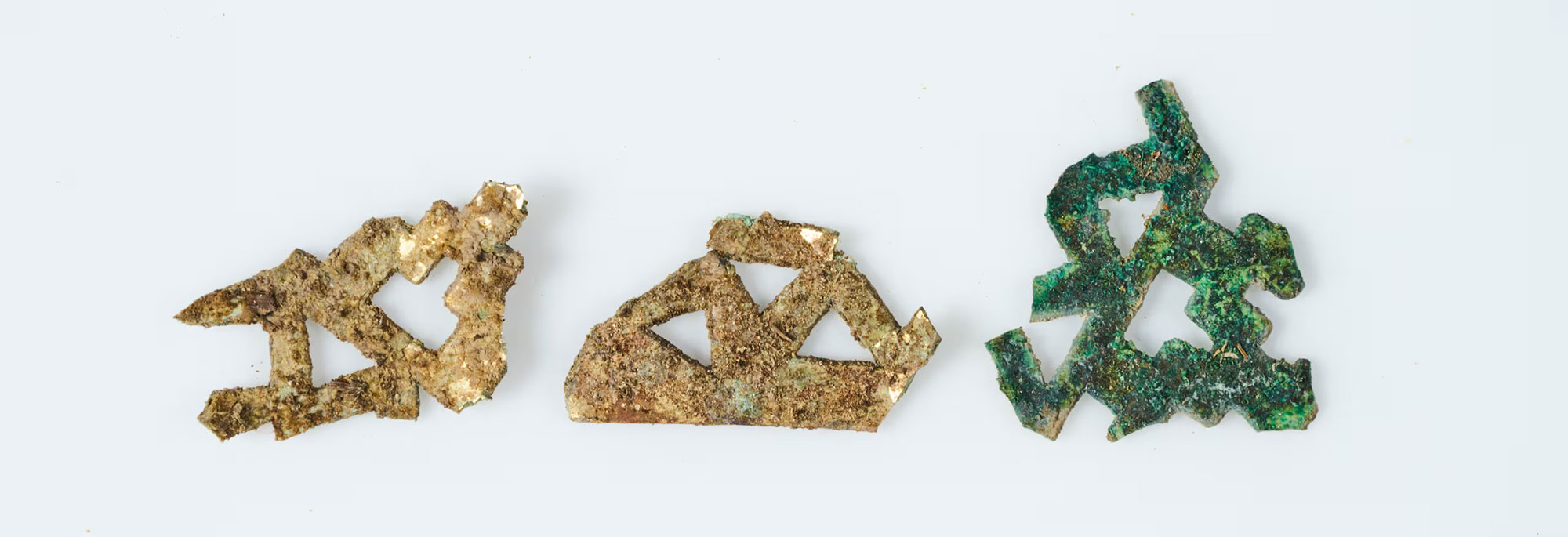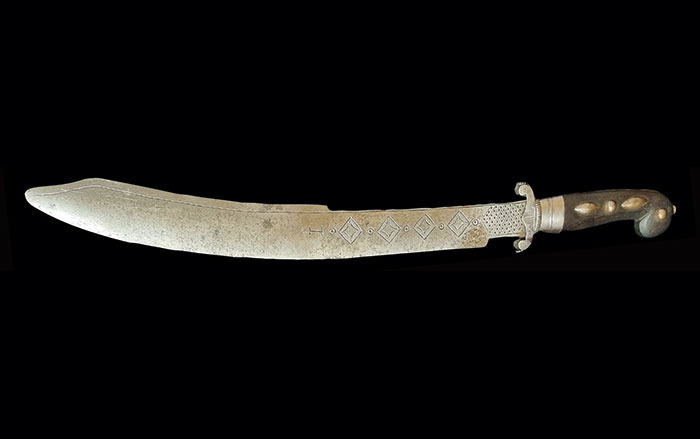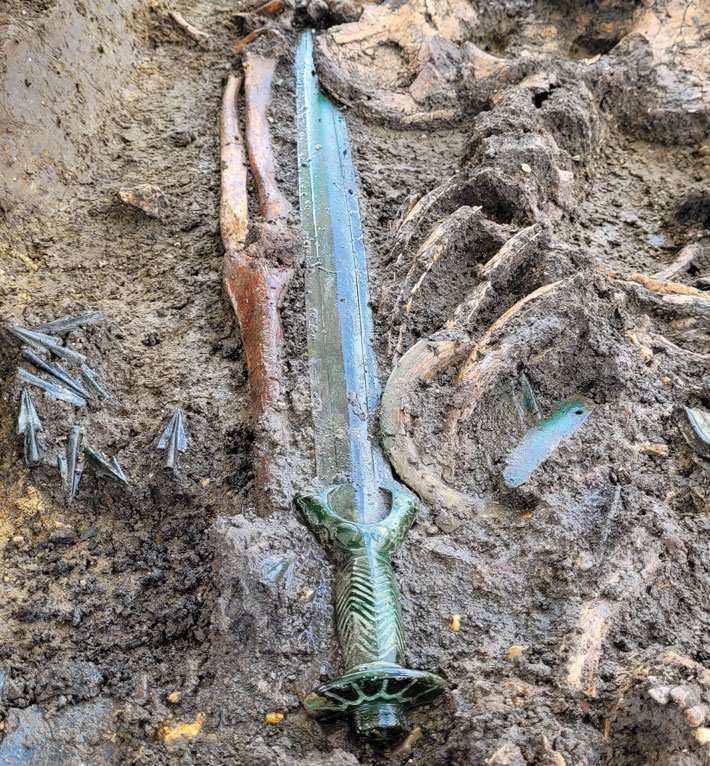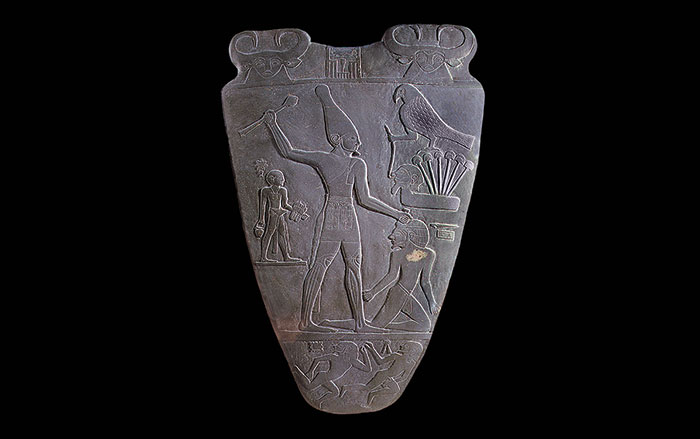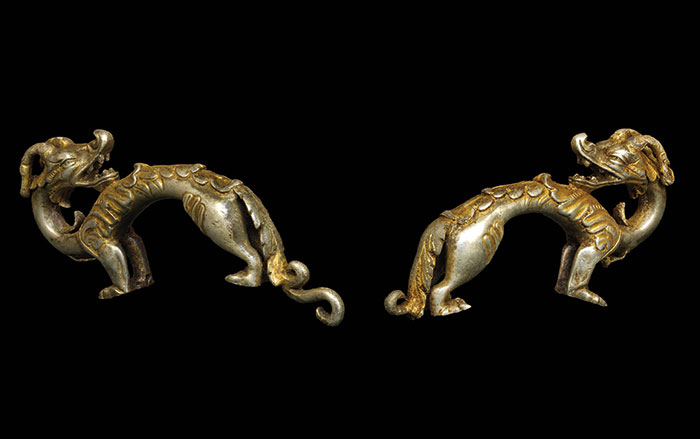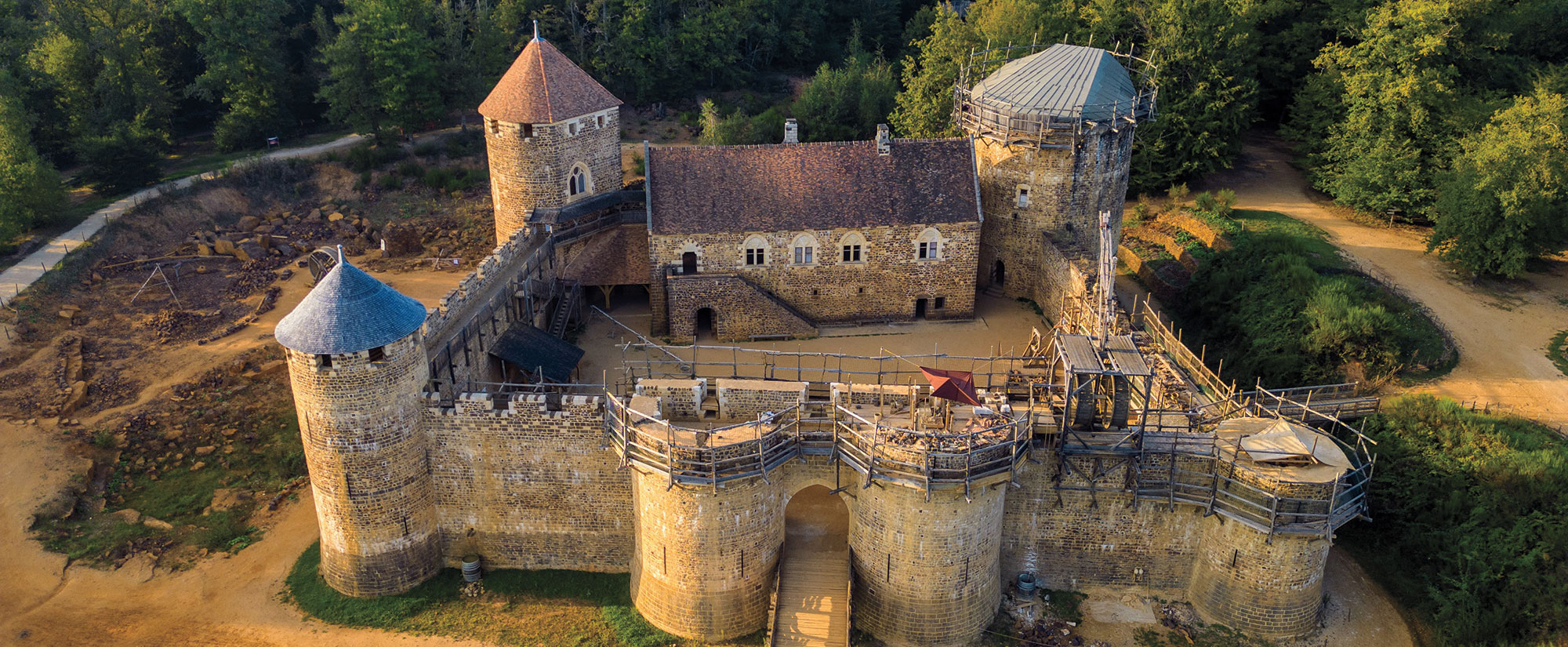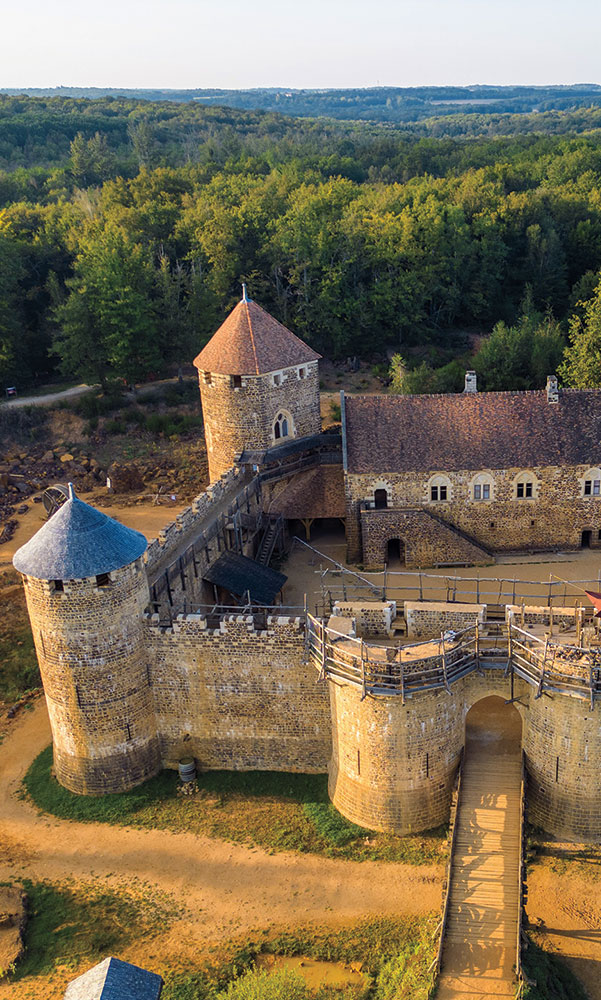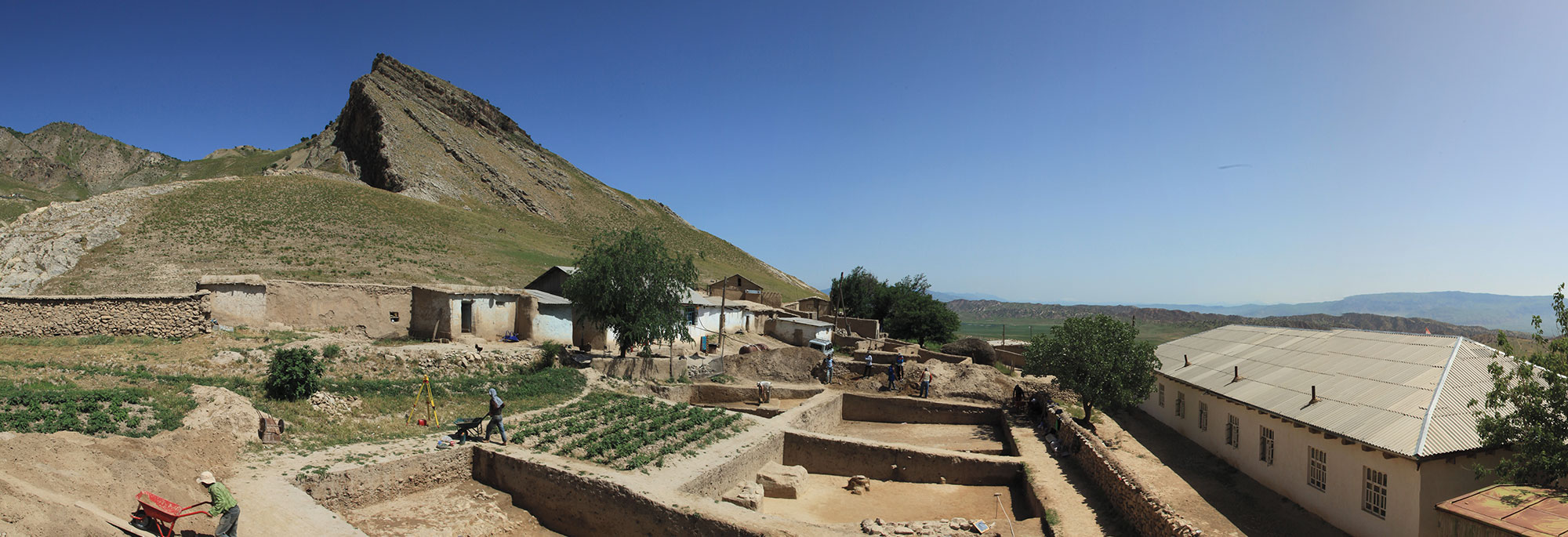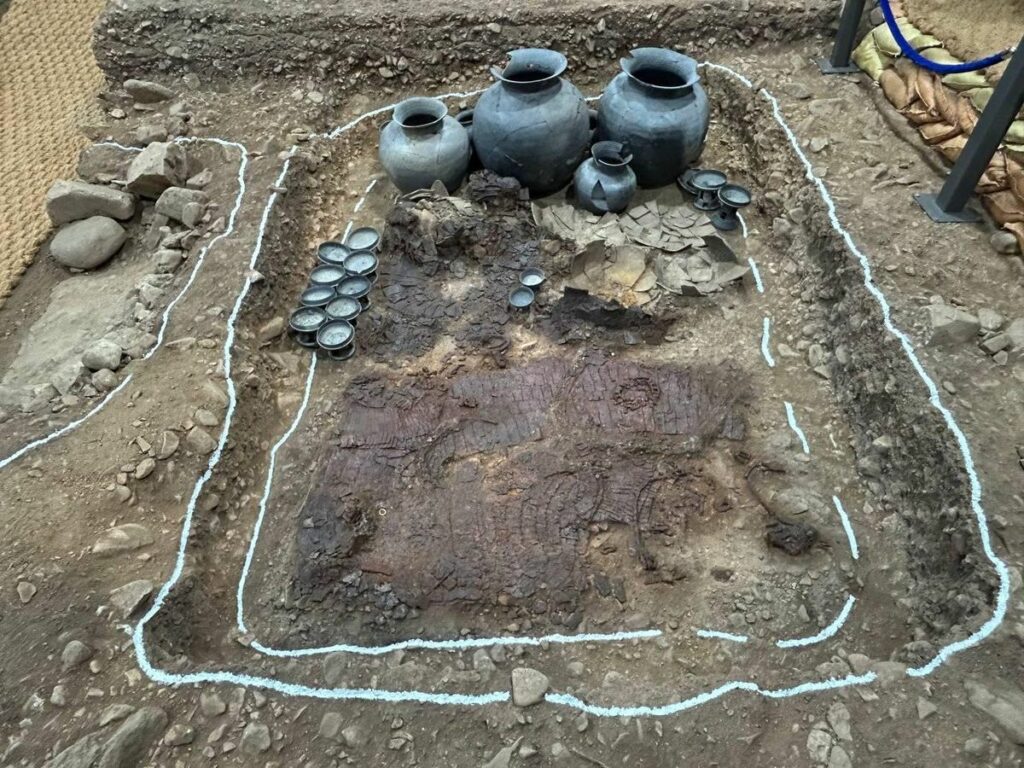
GYOENGJU, SOUTH KOREA—Korea JoongAng Daily reports that six wooden tombs have been discovered under the burial of a general who lived in Korea’s Silla Kingdom in the later fourth to early fifth century A.D. “Building a tomb directly over an earlier one suggests there may have been a shift in ruling elites or in burial practices during the period,” said Sim Hyeon-cheol of Keimyung University. “Many earlier wooden chamber tombs may be buried beneath the large stone mound tombs in Gyeongju,” he explained. The first of these older tombs, dubbed Hwangnam-dong Wooden Chamber Tomb No. 1, contains two chambers. The main chamber held a ring-pommel sword and armor and battle gear for a man and a horse, including pieces of a gold-bronze headpiece similar to a cap-style crown recovered from another Silla tomb in the region. Teeth found in this chamber are thought to represent a man in his early 30s. Human remains and full sets of armor for a person and a horse were also uncovered in a side chamber within the tomb. A gold earring was found near the head of this person’s remains, which suggests that he may have been a high-ranking subordinate of the individual buried in the main chamber. “Grave goods such as pottery and armor were buried first, and the body appears to have been forced into the remaining space, which likely resulted in the splayed position,” said Kim Heon-seok of the Gyeongju National Research Institute of Cultural Heritage. Kim also said that this may be evidence of sunjang, the ritual live burial of subordinates or family members. The practice was banned in the Silla Kingdom in A.D. 502. To read about a find from another Silla tomb in Gyeongju, go to "Mysterious Golden Sacrifice."


